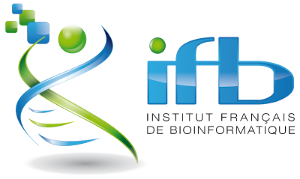Bacterial comparative genomics
purlPURL: https://gxy.io/GTN:P00027Comment: What is a Learning Pathway? We recommend you follow the tutorials in the order presented on this page. They have been selected to fit together and build up your knowledge step by step. If a lesson has both slides and a tutorial, we recommend you start with the slides, then proceed with the tutorial.
We recommend you follow the tutorials in the order presented on this page. They have been selected to fit together and build up your knowledge step by step. If a lesson has both slides and a tutorial, we recommend you start with the slides, then proceed with the tutorial.
This learning path aims to teach you how to analyze bacterial genomes, starting with genome retrieval from NCBI and GTDB. The workflow will include quality control (CheckM2), dereplication (dRep), and pangenomic analysis (PPanGolin). Functional and structural annotation will be performed, with a focus on identifying mobile genetic elements and antimicrobial resistance genes. Phylogenetic analysis will compare core genome trees and presence-absence pangenome trees to reveal complementary evolutionary insights.
Module: Dataset construction
For comparative genomics, dataset construction is the first essential step. Here we explain how to build a dataset mixing public and private genomes or assemblies.
Time estimation: 1 hour
Learning Objectives
- to do
- to do
| Lesson | Slides | Hands-on | Recordings |
|---|
Module: Genome quality control
Before genome comparison, quality of genomes and assemblies needs to be checked.
Time estimation: 1 hour
Learning Objectives
- to do
- to do
| Lesson | Slides | Hands-on | Recordings |
|---|
Module: Structural and functional annotation
Genomes and assemblies must can be annotated to detect genes with a focus on identifying mobile genetic elements and antimicrobial resistance genes.
Time estimation: 5 hours
Learning Objectives
- Run a series of tool to annotate a draft bacterial genome for different types of genomic components
- Evaluate the annotation
- Process the outputs to formate them for visualization needs
- Visualize a draft bacterial genome and its annotations
- Run a series of tool to assess the presence of antimicrobial resistance genes (ARG)
- Get information about ARGs
- Visualize the ARGs and plasmid genes in their genomic context
| Lesson | Slides | Hands-on | Recordings |
|---|---|---|---|
| Bacterial Genome Annotation | |||
| Identification of AMR genes in an assembled bacterial genome |
Module: Pangenomic analysis
Genomes and assemblies must can be annotated to detect genes with a focus on identifying mobile genetic elements and antimicrobial resistance genes.
Time estimation: 1 hour
Learning Objectives
- to do
- to do
| Lesson | Slides | Hands-on | Recordings |
|---|
Module: Phylogenetic analysis
Phylogenetic analysis allows visualization and compares core genome trees and presence-absence pangenome trees to reveal complementary evolutionary insights
Time estimation: 1 hour
Learning Objectives
- to do
- to do
| Lesson | Slides | Hands-on | Recordings |
|---|
Editorial Board
This material is reviewed by our Editorial Board:
Funding
These individuals or organisations provided funding support for the development of this resource
